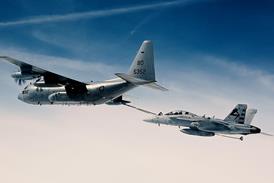Paul Lewis/SINGAPORE
When Rod Eddington was approached to head Ansett, the former Cathay Pacific Airways managing director made a tie-up with Air New Zealand (ANZ) a prerequisite condition. After just six months at the helm, he has further propelled the Australian carrier on to the international stage by joining with Singapore Airlines (SIA) to form a strategic three-way partnership
Until the memorandum is confirmed and given the blessing of Australia and New Zealand's respective trade-practices bodies, the airline troika is avoiding public comment about the substance and direction of the alliance. "It's a step-by-step process," cautions the new executive chairman. "Today is about commercial co-operation between the three entities."
It is clearly understood from other senior sources that SIA's end goal is an equity stake in Ansett. This will entail either a purchase of shares from existing shareholders News Corporation and ANZ, a fresh stock issue, or a combination of the two. Ansett needs the new capital, but must first persuade the Government to raise the 50% ceiling on foreign ownership.
The three carriers have been equally coy about the question of wider affiliations, beyond stating that members retain the "-flexibility to form non-conflicting alliances with other airlines". Ansett's 32-month-old codeshare arrangement with Malaysia Airlines will almost certainly be an early casualty of the new alliance.
Airline insiders say that the long-term aim is to cultivate a "much greater global-aviation entity". Although SIA already has an alliance in the form of its Global Excellence partnership with Swissair and Delta Air Lines, this is seen as lightweight when pitted against an American Airlines-British Airways-Qantas line-up.
Ansett and its two new partners appear instead to be setting their collective sights on the recently formed Star Alliance of Air Canada, Lufthansa, SAS, Thai Airways International and United Airlines. While there is clear synergy between the two groups, there is also the potential hurdle of accommodating SIA and Thai.
An outline basis for such a tie-up is starting to gel. United already has codeshare links with Ansett and in March entered into a transpacific/Tasman agreement with ANZ. Within days of unveiling its tie-up with SIA and Ansett, ANZ also announced a partnership agreement with Air Canada. Making Ansett an integral player in a global alliance is an indispensable weapon in Eddington's battle to restore the cash-strapped carrier's fortunes. The airline has been in a financial free-fall for the past four years, culminating in a pre-tax operating loss of nearly A$19 million ($14.6 million) in 1995/6. The financial year to June 1997 is tipped to be equally uninspiring.
"I've talked about it being a great airline, but a poor business, and it's a poor business because it's not profitable," says Eddington. "Some of the solutions to Ansett's problems will come from working intelligently with our alliance partners ANZ and SIA. It gives us the opportunity to work with them in key areas to develop economics of scale," he adds.
The commercial benefits of the alliance are twofold, providing Ansett with a "critical mass" to develop its route network and, secondly, boosting cost-effectiveness. A shared fare structure has been unveiled, while other areas of potential co-operation are being studied, such as purchasing, marketing, information technology and common-user arrangements.
Eddington explains: "It's about being more productive. It's not just a matter of cutting costs. It's about being more efficient by pooling resources. It's about getting better value for money by acting collectively rather than individually."
Ansett is also taking a long hard look at its own internal structure. Around a dozen different sub-groups have been set up, stretching right across the business, from engineering and maintenance to catering and ground services. "We're taking the business apart bit by bit and working out how we can be more efficient," says Eddington.
An injection of additional capital would be a welcome move at a time when the airline is about to embark on a major re-equipment programme. At the top of its list of requirements are eight new widebody jets, plus a similar number of options, for long-range domestic and international services.
"We've made up our minds which equipment we want and have an offer from a manufacturer that gives us considerable flexibility," says Eddington. No formal announcement is anticipated before at least September, as the airline has still to "-build a business that stacks up", he adds.
If, as expected, Ansett decides in favour of Boeing, the new alliance will give it the added option of purchasing or leasing new aircraft from Singapore. SIA already leases three of its 747-400s to Ansett and, together with its sister company Singapore Aircraft Leasing Enterprise (SALE), has 77 Boeing 777s on order or option. SALE's Airbus A320/321 orderbook may also have a bearing on the joint Ansett and ANZ decision over a replacement narrowbody.
The alliance is not a complete panacea to Ansett's ills and, with two new partners relying on it to perform, there will be more pressure on the airline to put its house in order. "Some of the things Ansett has to do to restore profitability, it has to do itself- The alliance strategy is part of this, and material improvement to our bottom line is our goal," says Eddington.
Source: Flight International























